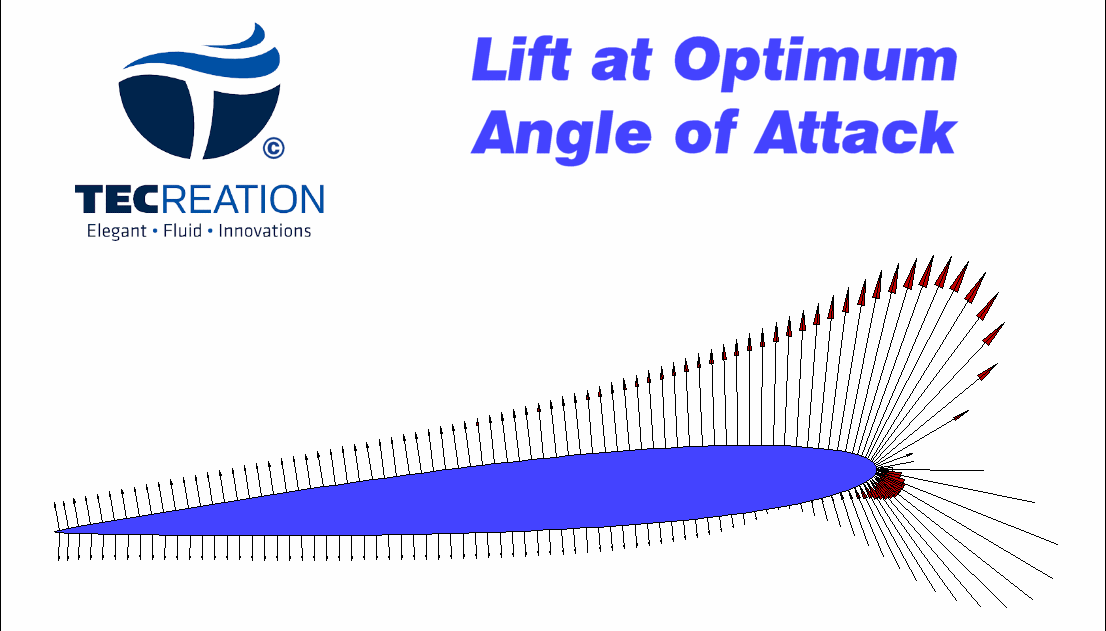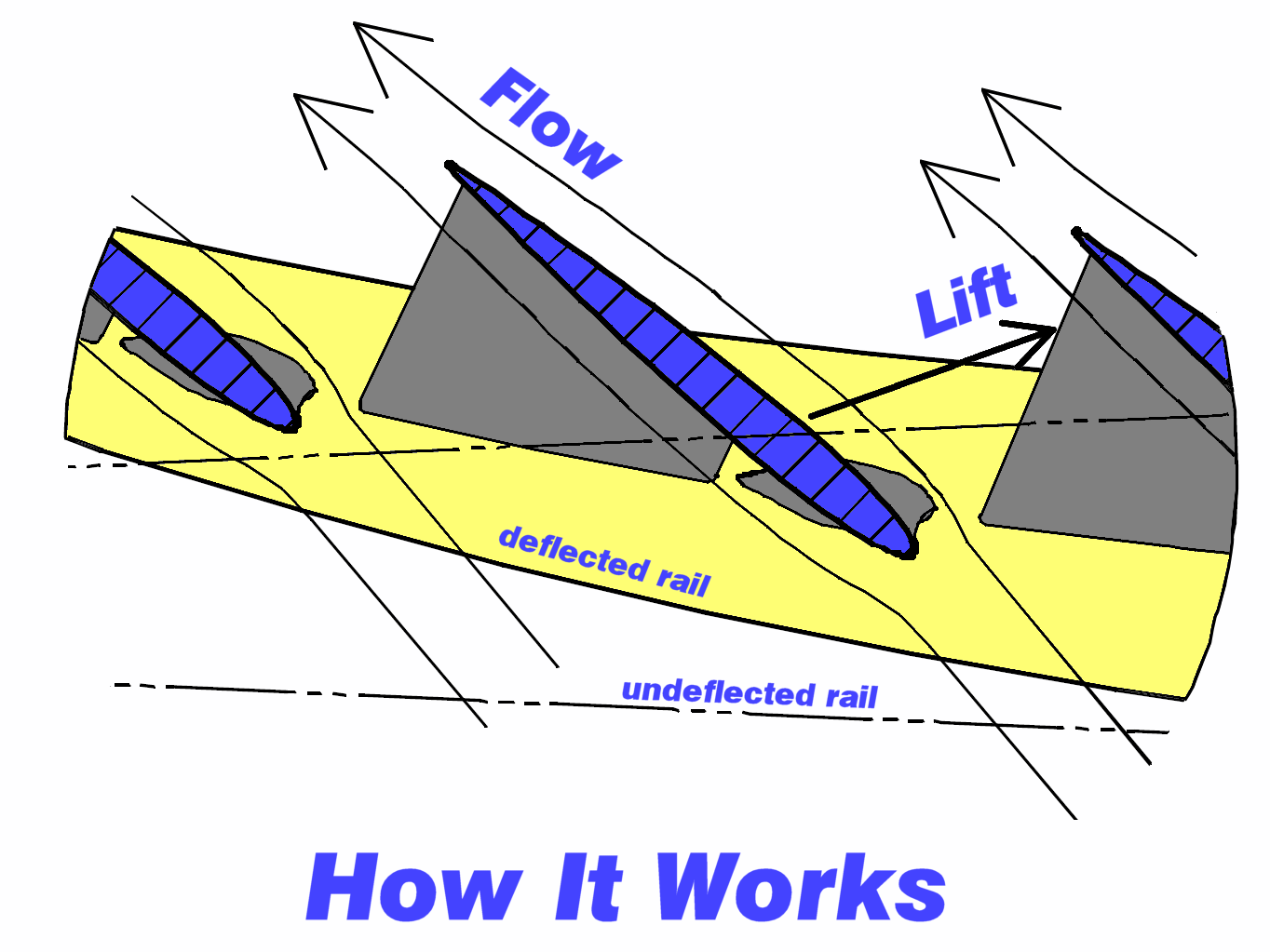What Makes MaxAirTM Work?
 MaxAirTM takes what we have learned in the sky and puts it in the water. Airplanes take advantage of "lift" which is created as air flows faster over the top of a wing than the bottom.
MaxAirTM takes what we have learned in the sky and puts it in the water. Airplanes take advantage of "lift" which is created as air flows faster over the top of a wing than the bottom.  Our fins use several rows of these wings which we call vanes to create the lift which helps propel us forward. The vanes rotate to align to the optimum angle of attack (5 degrees) so there is laminar flow across the vanes. This produces lift on the side of the vane which is facing forward at the time and propels you forward.
Our fins use several rows of these wings which we call vanes to create the lift which helps propel us forward. The vanes rotate to align to the optimum angle of attack (5 degrees) so there is laminar flow across the vanes. This produces lift on the side of the vane which is facing forward at the time and propels you forward. Many wonder if the substantial gaps formed as the vanes rotate create a loss of "power." On conventional fins that might be the case but the MaxAirTM fins use lift rather than just pushing water around. The gaps are actually a loss of drag. That is one reason there is so much less effort required to kick. I am spoiled now. Whenever I trade fins with someone so they can try the MaxAirTM I feel like I have just put boat anchors on my feet. It feels like I am being pulled backwards, especially when coasting. Here is an illustration showing how the vanes work together to provide lift. In this illustration the swimmer is moving to the right.

Test Results
This is where the rubber hits the road (so to speak). These images are normalized plots of data collected during analytical testing.



